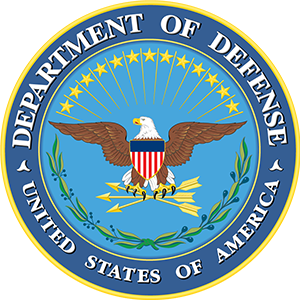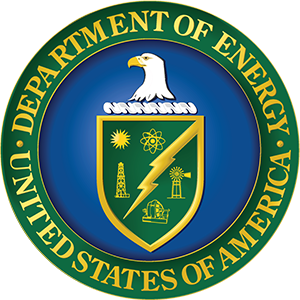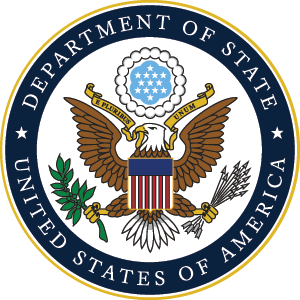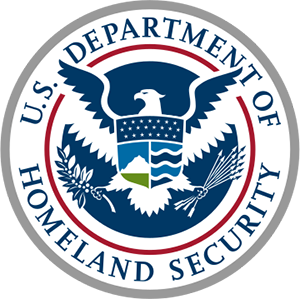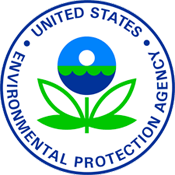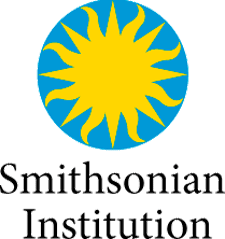Overview
Within This Page
No matter how sustainable a building may have been in its design and construction, it can only remain so if it is operated responsibly and maintained properly. For example, the use of toxic cleaning products can deteriorate indoor air quality and materials; failure to test sensor control points on a regular basis can compromise energy efficiency; and poor training can lead to early system failures. Sustainable operations and maintenance (O&M) practices focus primarily on the actions of building occupants, and encompass safety, health and safety, comfort, and productivity, with an understanding of the need for subsequent generations to reuse and recycle building components. During the design and construction process, to the maximum extent possible, select systems that will be easy to maintain. Ensure that operation and maintenance personnel are part of the project planning and development process, such as by establishing commissioning criteria at the onset of a project.
Throughout a building's life cycle, the operations and maintenance plan / program / practices should:
- Train building occupants, facilities managers, and maintenance staff in sustainable design principles and methods that will minimize system failures;
- Purchase cleaning products and supplies that are resource-efficient, bio-degradable and as safe as possible for both janitorial staff and building occupants, and thereby ensure good indoor air quality;
- Test sensor control points on a regular basis to ensure energy efficiency is not compromised;
- Use automated monitors and controls for energy, water, waste, temperature, moisture, and ventilation;
- Reduce waste through source reduction, reuse, recycling and/or composting to eliminate disposal of reusable materials at landfills and incinerators;
- Minimize travel by supporting telecommuting programs and enabling a mobile work environment;
- Perform scheduled energy audits and re-commissioning of systems; and
- When updating a facility or its systems, choose higher efficiency equipment and durable materials that will withstand storms and other natural events, and improve the tightness of the building envelope if feasible.
Recommendations
Train Building Occupants, Facilities Managers, and Maintenance Staff in Sustainability Principles and Methods
- Implement a comprehensive preventive maintenance program to keep all building systems functioning as designed. See WBDG Reliability-Centered Maintenance (RCM).
- Install utility meters and track progress of applicable energy, water, gas, and waste systems to optimize performance. It is not possible to benchmark whole building performance without mapping utility meters.
- Provide logistic support and tools to facilities managers and maintenance crews to calibrate, operate and maintain facilities in accordance with the design intent.
- Engage building occupants through surveys, education, clear signage, and incentive programs.
- Maintain a Certified Energy Manager® (CEM®) on staff to monitor systems, energy costs, and energy conservation initiatives, whenever it is cost-effective to do so.
- Participate in Energy Star Portfolio Manager to measure and track the building's energy consumption and water use, as well as the management of construction and demolition materials during renovation and tenant build-out.
- Recognize the potential for highly skilled technical jobs in building controls and maintenance that high-performance sustainable buildings provide. Requiring extensive training and skills, these jobs provide good salaries and job security.
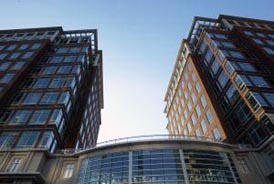
EPA's Potomac Yard Headquarters building in Arlington, Virginia, earned LEED Platinum certification for existing buildings operations and maintenance. Photo Credit: U.S. EPA
Employ Environmentally Preferable Landscaping Practices
- See WBDG Sustainable—Optimize Site Potential.
- See WBDG Achieving Sustainable Site Design through Low Impact Development Practices.
- See WBDG Landscape Architecture and the Site Security Design Process.
- See The Sustainable SITES Initiative.
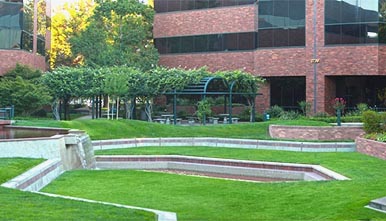
"Grasscycling" with mulching mowers can reduce fertilizer use up to 30%.
Purchase Resource-Efficient and Safer Cleaning Products and Maintenance Services
- Use safer cleaners, such as EPA's Design for the Environment (DfE) labeled products, for better indoor air quality.
- Look for products that are concentrated (i.e., use less packaging).
- Use integrated pest management (IPM) practices for both facility and landscape maintenance, to reduce pesticide and herbicide use. IPM has been mandated on federal property since 1996 by Section 136r–1 of Title 7, United States Code, and is cited in Title 41 of the Code of Federal Regulations (102–74.35) as a required service for agencies subject to the authority of the General Services Administration (GSA).
- Use non-toxic pest control for indoor spaces and potted plants. See also WBDG Evaluating and Selecting Green Products.
- Keep air ducts clean and free of microorganisms through a structured program of preventive maintenance and regular filter changes.
- Janitorial staff knowledge and training are important to meeting IEQ goals. Janitorial Service Contracts should meet ASTM E1971 Standard Guide for Stewardship for the Cleaning of Commercial and Institutional Buildings.
Automate Energy, Water, Waste, Temperature, Moisture, and Ventilation Monitors and Controls
- Use schedule, occupancy, or luminance sensors to control lighting and other functions. In the absence of sensors, turn off lights when not in use.
- Use timers for heating/ventilation/air conditioning (HVAC) equipment.
- Turn off computers, monitors, and other equipment when not in use.
- Enable power-down features on office equipment (e.g., Energy Star® computers).

ENERGY STAR-labeled computers use 30%–65% less energy than computers without this designation, depending on usage. Laptops use much less energy than desktop computers. Photo Credit: Energy.gov
Reduce Waste through Source Reduction and Recycling
- Implement a paper reduction strategy, which is integrated with technology and space use strategies.
- Develop and implement a waste management policy for building operation, including an initial waste generation and recycling assessment, targets for recycling rates, occupant incentives, and verification on an annual basis as to whether reduction goals are being met. The following materials should be targeted for recycling in the policy: consumer products (e.g. computers, electronic equipment, office supplies, plastics, glass, paper, aluminum); routine maintenance items (e.g. fluorescent and HID lamps), and items from renovation (e.g. acoustical ceiling tiles, carpet tiles, and furniture).
- Use on-site composting of organic materials.
- Adopt green meeting practices. Evaluate potential hotel and conference center venues that are sustainable in that they recycle, purchase recycled or recyclable items, use nondisposable food and beverage service, have bottle deposits, a plan for leftover food and meeting materials, and practice water and energy conservation.
Support Practices that Encourage Sustainable Transportation Choices or Minimize Travel
- Install a sufficient number of bike racks to encourage use.
- Designate shuttle/bus stops in safe, accessible areas near the facility.
- Incentivize users of public or shared transportation systems.
- Provide a sufficient number of dedicated car/van-pool parking spaces.
- Support teleconferencing and videoconferencing through proper operations and maintenance of communication systems.
- Support telework (aka telecommuting) programs by providing hoteling spaces (flexible and well-equipped office spaces that teleworkers can use when they come into the office) and by providing properly operating and maintained telework centers.

The City of Pasadena, California, installs bike racks in the public right-of-way to make daily bicycle use convenient. Locations for the racks are based on public requests through the Citizen Service Center. Photo Credit: Pasadena Department of Transportation
Relevant Codes, Laws, and Standards
Codes and Laws
- Executive Order 13221, "Energy Efficient Standby Power Devices"
- Executive Order 13834, "Efficient Federal Operations"
- International Green Construction Code (ICC IgCC), International Code Council
Standards
- ASTM D7338 Standard Guide for Assessment of Fungal Growth in Buildings
- ASTM E1971 Standard Guide for Stewardship for the Cleaning of Commercial and Institutional Buildings
- PBS-P100 Facilities Standards for the Public Buildings Service General Services Administration (GSA)
- UFC 1-200-02 High Performance and Sustainable Building Requirements
Additional Resources
Optimize Operational and Maintenance Practices
- Energy Star Operations & Maintenance Reports
- EPA WasteWise
- EPA Smart Growth
- Facilities Management Institute—Federal Buildings Personnel Training Act (FBPTA)
- Facilities Management Institute—Accelerate FM
- FedCenter.gov—the Federal Facilities Environmental Stewardship and Compliance Assistance Center, is a collaborative effort between the Office of the Federal Environmental Executive (OFEE), the U.S. Army Corps of Engineers Construction Engineering Research Laboratory, and the U.S. EPA Federal Facilities Enforcement Office, a one-stop source of environmental stewardship and compliance assistance information focused solely on the needs of federal government facilities.
- Federal Leadership in High Performance and Sustainable Buildings Memorandum of Understanding
- Green Building Initiative
- Living Future Institute
- Sustainable Facilities Tool (SFTool)—SFTool's immersive virtual environment addresses all your sustainability planning, designing and procurement needs.
- Operations and Maintenance in Federal Facilities—Federal Energy Management Program (FEMP)
- U.S. Green Building Council
- Leadership in Energy and Environmental Design (LEED®)
- LEED for Building Operations + Maintenance (Existing Buildings)
- LEED for Neighborhood Development (for location, walkable neighborhoods, and access to transportation)
- LEED for Homes
Train Building Occupants, Facilities Managers, and Maintenance Staff in Sustainability Principles and Methods
- Energy Star Portfolio Manager—Portfolio Manager is an online tool that can be used to benchmark the energy, water or waste performance of one building, or a whole portfolio of buildings.
- IFMA Certification Program for Facility Managers—Maintenance and operations management is one of eight competency areas evaluated in becoming a Certified Facility Manager. An ideas exchange among facility managers is available on an advertising-supported web page.
- Benchmark sustainable purchasing practices using tools such as the Sustainable Purchasing Benchmarking System.
Purchase Resource-Efficient and Safer Cleaning Products and Maintenance Services
- Green Procurement Compilation on GSA's SFTool
- Green Seal
- GSA Schedule 73—Food Service, Hospitality, and Cleaning—offers a variety of cleaning equipment and accessories, and cleaning products (including biodegradable products) for daily cleaning-products that keep facilities clean in an environmentally friendly manner. Also available are office recycling containers and waste receptacles, outdoor recycling containers, and industrial trash storage containers.
- Ingredients Used in Pesticide Products, EPA
- ISSA—Green Cleaning
- Safer Choice
- South Coast Air Quality Management District (SCAQMD)
- Sustainable Marketplace: Greener Products and Services, EPA
Use Automated Monitors and Controls for Energy, Water, Waste, Temperature, Moisture, and Ventilation Monitors and Controls
- Building Air Quality: A Guide for Building Owners and Facility Managers, EPA and National Institute for Safety and Health.
- Energy Star®
- Operations and Maintenance in Federal Facilities—Federal Energy Management Program (FEMP)
Reduce Waste through Source Reduction and Recycling
Support Practices that Encourage Sustainable Transportation or Minimize Travel
- Carbon Footprint Tool, GSA [Decommissioned Spring 2017]
- Telework.gov—The U.S. Office of Personnel Management (OPM) maintains this website to provide easy access to information about telework in the Federal Government, in accordance with the Telework Enhancement Act of 2010.
- Public Law 106–346, §359—Congressional Federal Telework Mandate 2001—Part of the Department of Transportation and Related Agencies Appropriations Act, 23 October 2000.
- The Telework Coalition (TelCoa)
Publications
- Building Energy Information Systems: State of the Technology and User Case Studies , Lawrence Berkeley National Laboratory, November 2009.

